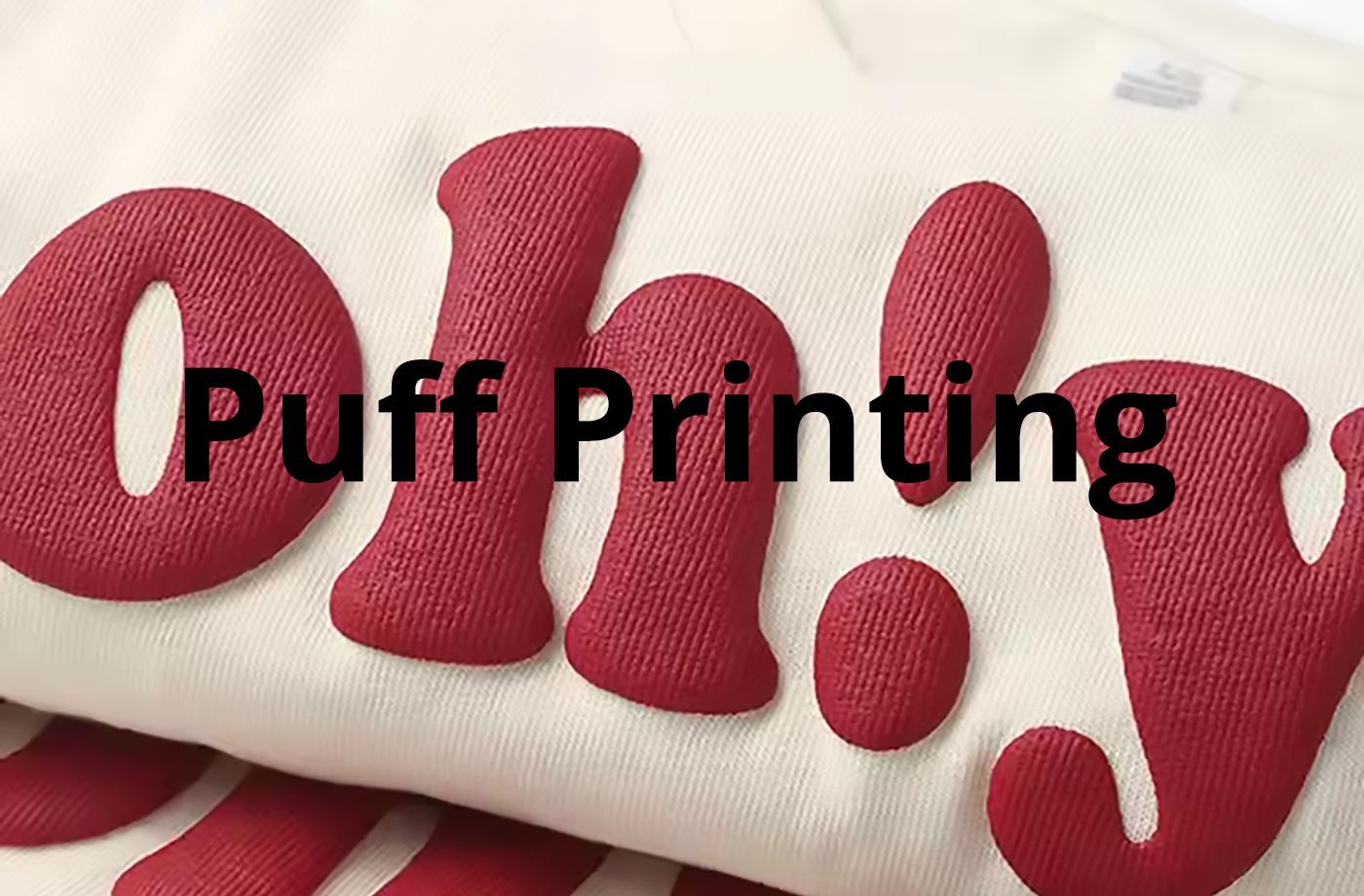Puff printing is a secret weapon for brands, creatives, and businesses aiming to make their designs unforgettable. But how does it work? And what gives it that premium, three-dimensional quality that elevates any garment?
In this guide, we’ll uncover the science behind puff printing and explore its unique benefits. Whether you’re a designer looking to innovate or a business owner aiming for that “wow” factor, you’ll want to keep reading.
What is puff printing
Puff printing is a specialized screen printing technique that uses unique puff inks, which expand when heated to create a raised 3D effect. This method is ideal for adding a three-dimensional appearance to logos, text, or detailed designs on fabrics such as cotton, polyester, and blends.
How does it work
Here is the puff printing process and the steps involved:
1. Ink preparation
A foaming additive is mixed into the plastisol ink at a ratio of 5% to 15%, with 10% to 15% creating a very soft texture. This mixture produces puff ink.
2. Screen preparation
A screen is created for the design. A lower mesh screen is typically used to apply the ink more thickly, which enhances the puffing effect.
3. Printing process
The puff ink is applied to the fabric through the screen. The process follows the same steps as standard screen printing, with a separate screen used for each color.
4. Heat curing
After application, the fabric is cured in a conveyor dryer or heat press. The curing temperature typically ranges from 300°F to 330°F (150°C to 165°C) for 1 to 2 minutes.
The heat activates the foaming agent, causing bubbles to form in the ink. These bubbles expand, creating a raised texture on the fabric.
The pros and cons of puff printing
Pros
-
Unique 3D texture: Creates raised, tactile designs that stand out visually, making it perfect for fashion and branding.
-
Durability: Heat-cured inks resist cracking and flaking, ensuring longevity even with frequent washing.
-
Versatility: Suitable for a variety of items, including t-shirts, hoodies, hats, and tote bags.
Cons
- Higher cost: Specialized inks, additives, and equipment increase production expenses, making it less suitable for small orders.
- Design limitations: Works best for bold, simple designs rather than intricate patterns, as fine details may blur.
- Color limitations: The fluffy additives can dilute color vividness, limit color options, and require more pigment to achieve desired results.
Application of puff printing in life
Puff Printing: This eye-catching 3D effect is actually quite common in our everyday lives.
Apparel
- T-shirts and hoodies: Add logos, slogans, or artwork to casual and streetwear.
- Sportswear: Enhance team names, numbers, or motivational text on jerseys and sports equipment.
- Uniforms: Increase the visibility of company logos on employee clothing (e.g., restaurants, retail).
- Workwear: Highlight safety messaging or branding on industrial uniforms.
Accessories
- Hats and caps: Puff-printed logos or designs add durability and a premium feel.
- Bags and backpacks: Use for branding or decorative elements on tote bags, school backpacks, and wallets.
Home textiles
- Cushion covers and curtains: Create three-dimensional floral or geometric patterns for a luxurious touch.
- Bedding: Add playful or elegant textures to enhance the home atmosphere.
Children’s products
- Children’s clothing: Incorporate fun, tactile designs (e.g., cartoon characters, animals) on shirts or onesies.
- Toys and accessories: Add 3D elements to plush toys or school supplies.
Conclusion
Puff printing bridges the gap between visual appeal and sensory engagement by transforming flat graphics into dynamic, textured art. This technique allows brands, designers, and DIY enthusiasts to elevate their garments with unique 3D textures that capture attention.
Whether you’re creating bold streetwear, statement pieces, or eye-catching promotional gear, puff printing delivers durability, comfort, and a touch of luxury that flat prints simply can’t match.
After all, in a world saturated with visuals, sometimes you need more than just color to make your mark—you need to stand out.
FAQ
What materials are best for puff printing?
Puff printing works best on fabrics like cotton, polyester, and cotton blends. These materials can handle the heat needed for the curing process. While puff printing is mainly used on textiles, it can also be applied to other heat-resistant surfaces.
What care instructions should I follow for items with puff printing?
To keep the raised effect intact:
- Wash the garment inside out in cold water.
- Use low heat settings when drying.
- Avoid ironing directly on the printed design.
How is puff printing different from other printing methods?
Unlike traditional screen printing, which creates a flat, two-dimensional image, puff printing uses heat-reactive inks to create a raised, textured effect. This technique adds a unique, tactile dimension to designs and can be combined with other printing methods for layered, multi-dimensional results.
Does the raised texture feel rough or uncomfortable?
Not at all! The texture is soft and slightly cushioned, making it comfortable to wear. While the design is noticeably raised, it doesn’t feel rough or irritating.


0 Comments